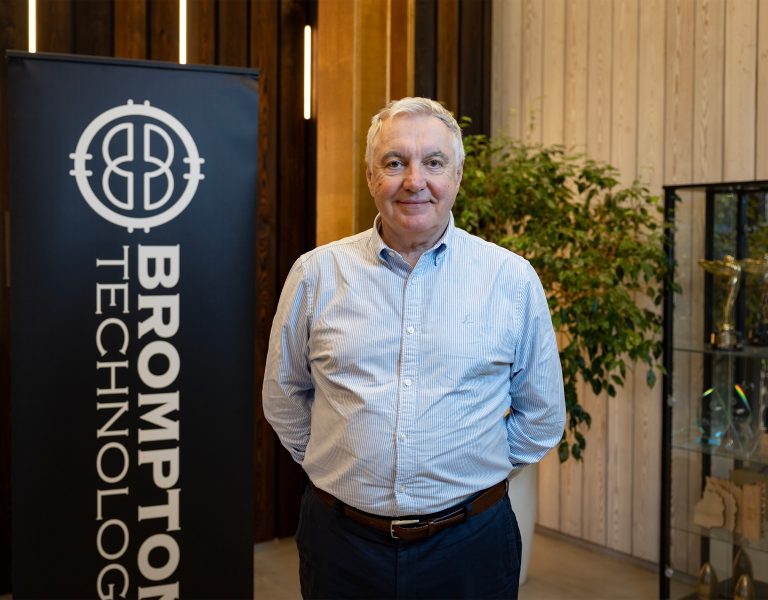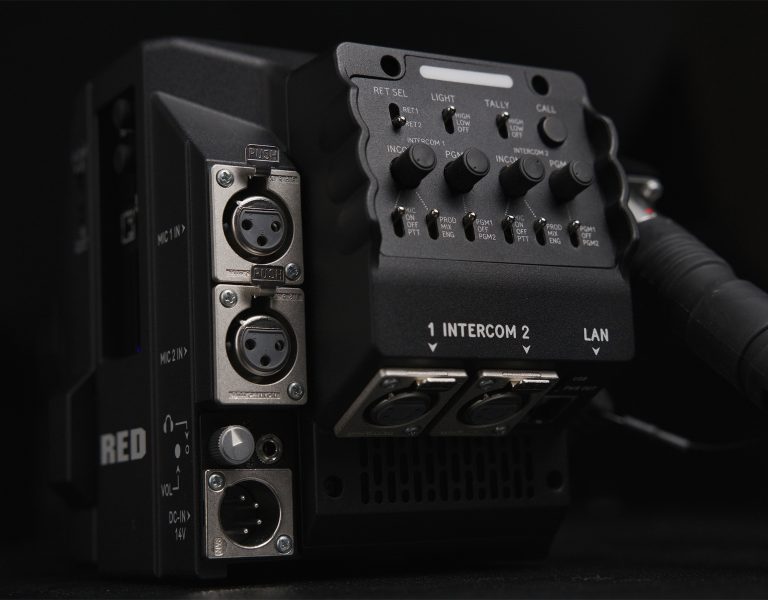
Created by Tony Basgallop and executive-produced by M. Night Shyamalan, the horror series Servant has delivered 40 episodes of psychological torment across four seasons as it tells the story of a young couple coping with the loss of their 13-week-old son. The series consistently takes viewers to unexpected places both narratively and visually; in the fourth and final season, those destinations were reached with the help of cinematographers Lowell A. Meyer; Gabriel Lobos; Marshall Adams ASC; Greta Zozula; Pete Konczal ASC; and Michael Gioulakis ASC. Meyer, who also photographed three episodes of season three, recently shared his perspective on maintaining the series’ signature style of camerawork.

Cinematographer Lowell A. Meyer (right).
Panavision: How would you describe the look of the series?
Lowell A. Meyer: This show is all about tension. Why are people doing what they’re doing? Why aren’t they doing another thing that could save them? What is outside the frame? What is that person eating?! It’s about the parcelling of information at the exact right time and withholding whenever you can.
This translates to the photography by way of holding shots as long as possible and letting the suspense, drama and even comedy play out in real time. It also usually means a lack of coverage, so we’re not giving ourselves or the audience a way out of that tension. It means seeing far down hallways and keeping the lighting moody, with lots of shadows and corners to hide in. Our camera is almost a character in and of itself, in every nook and cranny of the house, peering and moving to keep pace with the action. But it’s also a matter of contrast — the camera can seamlessly go anywhere it wants until it suddenly can’t and is locked off.
Everything was meticulously storyboarded in advance, so there was very little improvisation on the day. Our shots could be incredibly complex and sometimes required the camera to go in a very odd space in the house — under a door, in a garbage disposal, etc. Having the resources and team at Panavision New York so readily and closely available was a necessity to ensure the creative success of the season. We knew their cameras, lenses, and gear could handle the crazy shots and tasks that we were asking of the equipment and our crew every day.

Were there any particular visual references you looked at for inspiration?
Meyer: Being season four, the show’s look was so established that there was little more needed than the source material itself. The directors and I were always mining earlier episodes and shots to see how we could one-up them or do something unique in sets we’d seen so many times before, all while staying grounded and keeping every creative decision in the perspective of the characters and the emotions of the scenes.
That being said, Fincher, Hitchcock, Bong and Shyamalan were all names that the directors and I looked to for additional inspiration when stuck or presented with something unique for the show. Rosemary’s Baby and Parasite were big references for me since they deal with status and relationship dynamics within the confines of elevated and subterranean spaces.

What optical characteristics did you see in the Primo 70 lenses that made them the right match for Servant?
Meyer: The Primo 70swere an established lens set on the show, and for good reason: They’re fast, lightweight, relatively small, and they come in a wide variety of focal lengths. These practical advantages allowed them to be employed with our Mini LF on a Ronin 2, which we used for nearly every shot on the show, even with the Primo 70 zooms.
They’re really gorgeous lenses, with a sharpness across the frame yet a softness to the focus roll-off. Paired with a subtle softening filter, these lenses shine as full-frame beauties and give the show its melancholy and modern look.
More than anything, we used very wide focal lengths on the show. The 27mm and 29mm were the hero lenses by far, but it was important to have the wiggle room of a variety of wide focal lengths that held up in their sharpness and lack of distortion. Even though we were on a set where we could remove walls and built-ins to get any achievable angle, we tried to stay true to what would be possible in the physical confinements of a real house. Having smaller lenses and a variety of focal lengths helped us not break that creative limitation we imposed upon ourselves.

How does this project differ from others in your career?
Meyer: Servant was wholly a beast of its own, constantly reinventing what’s possible to do with a camera and how complicated a shot can get. I can’t count how many oners we did that were long takes, full of compound movements, pans and tilts that were tack sharp and needed to hit a critical mark with a critically tight depth of field. The crew was always chomping at the bit to tackle these big shots. It’s a powerful sight to behold when you see an entire crew working in sync to get a complicated idea on its feet and then accomplished on time and on budget — that’s an art in and of itself! There’s truly no better feeling to me than to be on a set that is running smoothly and producing scenes that make the whole crew proud to contribute their pieces of the puzzle.
We were nearly always single-camera filming, with the second camera preparing for the next scene. That helped us get ahead of these complicated setups. Working on a TV schedule, we often didn’t have a lot of prep time, so instead we would leap-frog the camera teams, going from Steadicam on A to dolly on B, then to Ronin on A, then a rigged mount on B, etc. We were always trying to stay one step ahead to make our days full of these bespoke rigs and shots.
Servant is also unique in my career in that it’s a TV show that really is director- and DP-driven. The directors and I were given lots of room to put our creative signatures on each episode and make shots that pushed the boundaries of the show, the actors and the sets. For a half-hour show, we walked onto set every day like it was a feature, giving the directors the room to express themselves and their vision. That’s not the typical TV scenario by a long shot!

–
Images courtesy of Lowell A. Meyer and Apple TV+. This article was supplied by Panavision.












